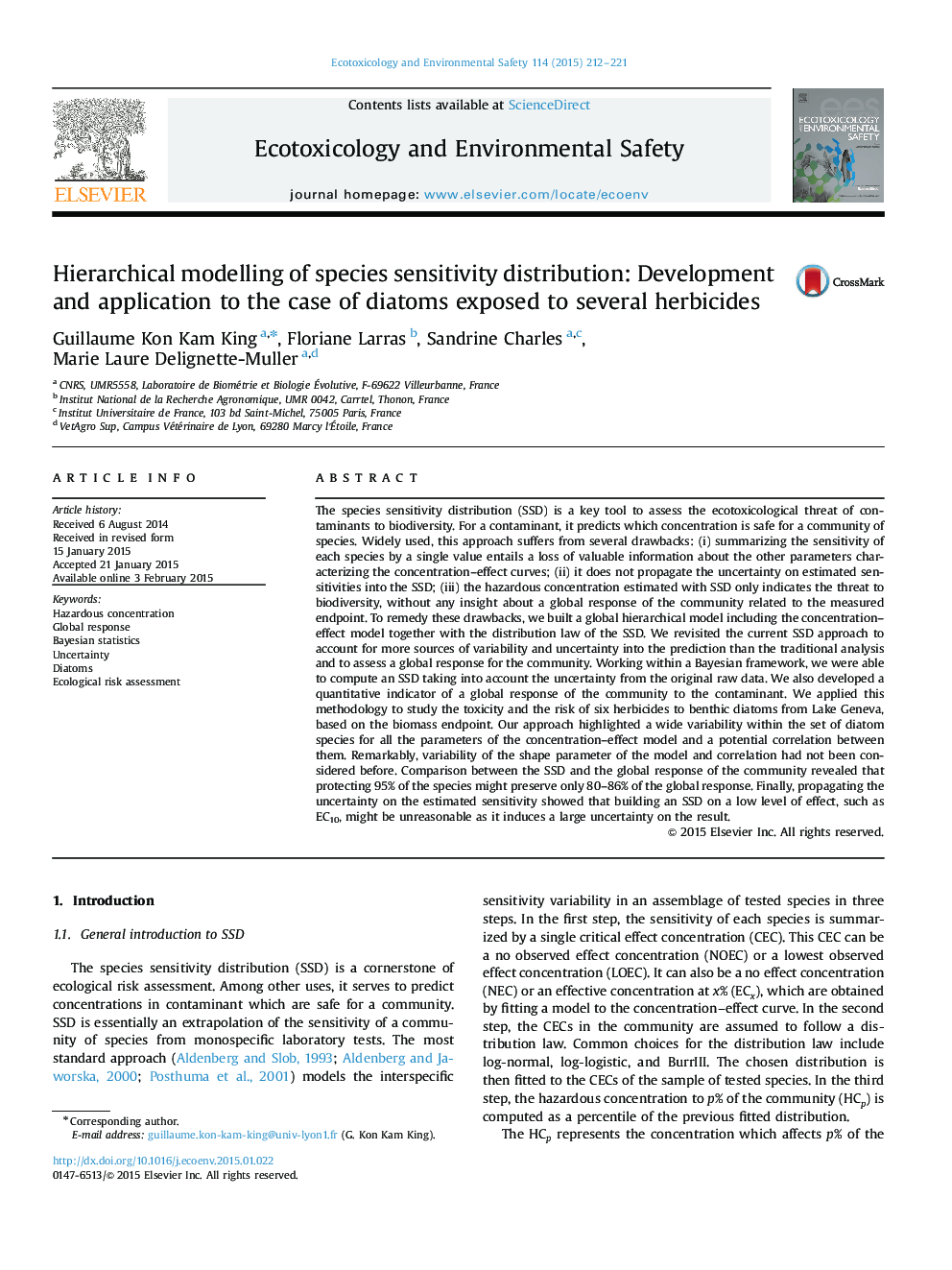| کد مقاله | کد نشریه | سال انتشار | مقاله انگلیسی | نسخه تمام متن |
|---|---|---|---|---|
| 4419820 | 1618949 | 2015 | 10 صفحه PDF | دانلود رایگان |
• A hierarchical SSD approach to properly include the uncertainty on the ECx.
• An SSD based on the full response to herbicide exposure not only on a summary (ECx).
• A new risk indicator based on the global response of the community.
• Preserving the global response differs from protecting a percentage of the species.
• Fitting an SSD on EC10 seems unreasonable: it leads to a large uncertainty on the HC5.
The species sensitivity distribution (SSD) is a key tool to assess the ecotoxicological threat of contaminants to biodiversity. For a contaminant, it predicts which concentration is safe for a community of species. Widely used, this approach suffers from several drawbacks: (i) summarizing the sensitivity of each species by a single value entails a loss of valuable information about the other parameters characterizing the concentration–effect curves; (ii) it does not propagate the uncertainty on estimated sensitivities into the SSD; (iii) the hazardous concentration estimated with SSD only indicates the threat to biodiversity, without any insight about a global response of the community related to the measured endpoint. To remedy these drawbacks, we built a global hierarchical model including the concentration–effect model together with the distribution law of the SSD. We revisited the current SSD approach to account for more sources of variability and uncertainty into the prediction than the traditional analysis and to assess a global response for the community. Working within a Bayesian framework, we were able to compute an SSD taking into account the uncertainty from the original raw data. We also developed a quantitative indicator of a global response of the community to the contaminant. We applied this methodology to study the toxicity and the risk of six herbicides to benthic diatoms from Lake Geneva, based on the biomass endpoint. Our approach highlighted a wide variability within the set of diatom species for all the parameters of the concentration–effect model and a potential correlation between them. Remarkably, variability of the shape parameter of the model and correlation had not been considered before. Comparison between the SSD and the global response of the community revealed that protecting 95% of the species might preserve only 80–86% of the global response. Finally, propagating the uncertainty on the estimated sensitivity showed that building an SSD on a low level of effect, such as EC10, might be unreasonable as it induces a large uncertainty on the result.
Journal: Ecotoxicology and Environmental Safety - Volume 114, April 2015, Pages 212–221
